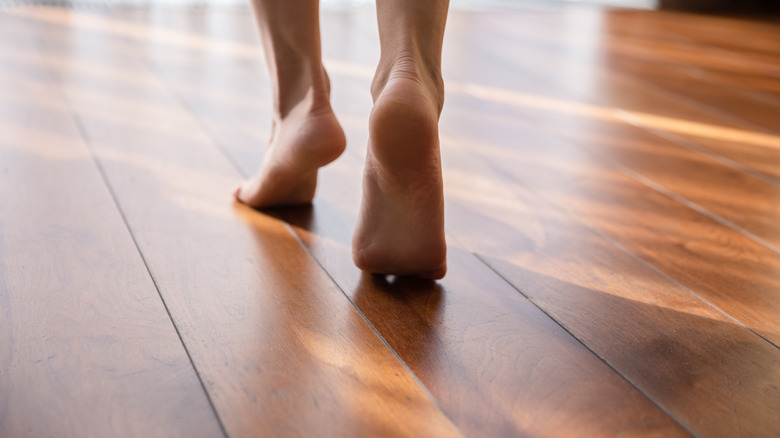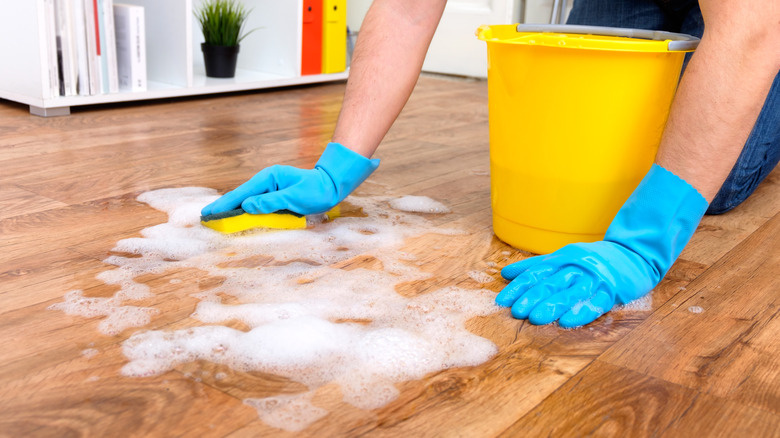Fix Your Squeaky Floorboards With This Common Kitchen Ingredient
We may receive a commission on purchases made from links.
Hear that? Yup, that irritating squeak is the sound of your floorboards rubbing on each other, a joist, or even a nail. While you may be tempted to rip up your floor in your hunt for a resolution to the irritating sound, the fastest fix for squeaky hardwood floors is — thankfully for your wallet — far simpler and cheaper. Grab a bar of soap from under the kitchen sink, suds it up in a jug of tepid water, and pour the soapy water into the cracks between the offending boards.
The key to why this method works is lubrication. Some surfaces (like the edges of two floorboards) produce a friction-induced squeal when they rub together. If you lubricate these surfaces, they glide past one another, reducing the friction and thus eliminating the resulting sound. While there are all kinds of lubrication options, such as talcum powder, powdered soapstone, and graphite, you might not have these handy. But a soap bar? That's more likely to be in your home already. A note of caution, however: Don't use a glycerine soap. It attracts and retains moisture. Prolonged use could damage your floorboards, rotting the wood or corroding fixtures.
Work in that soap
If you only use liquid soap at home, you'll need to buy a bar of soap instead. Look for something cost-effective and fragrance-free with a high concentration of oil for better lubrication. Walmart has a set of three non-scented rE: dishwashing soap bars for $36.85. Or pick up a 24-pack of Kirk's coconut-oil-based Castile bar soap for $40.84 on Amazon. You'll also need something to hold water (like a jug or small bowl); a mop, sponge, or soft cleaning cloth; and a dry towel.
Have you identified exactly which floorboard (or floorboards) are causing the squeak? If not, you'll need a family member or friend to help you find it. Grab a flashlight and head underneath the house. Ask your helper to walk over the floor, focusing on the squeaky areas, while you look for movement in the boards, underfloor insulation, or joists. Mark the spot from above so you know where to apply the soap.
There are two ways to tackle this annoying problem. As mentioned above, you can create a soap solution with water and pour it onto the floorboards. Alternatively, you can rub the bar of soap over the cracks. Either way, you need to drive the soap into the gaps with a wrung-out mop, sponge, or cloth. Dry the floor with a towel, then test the area to see if it's still squeaking. If it is, repeat the process. You can expect this solution to keep the creaks away for about two or three months.

